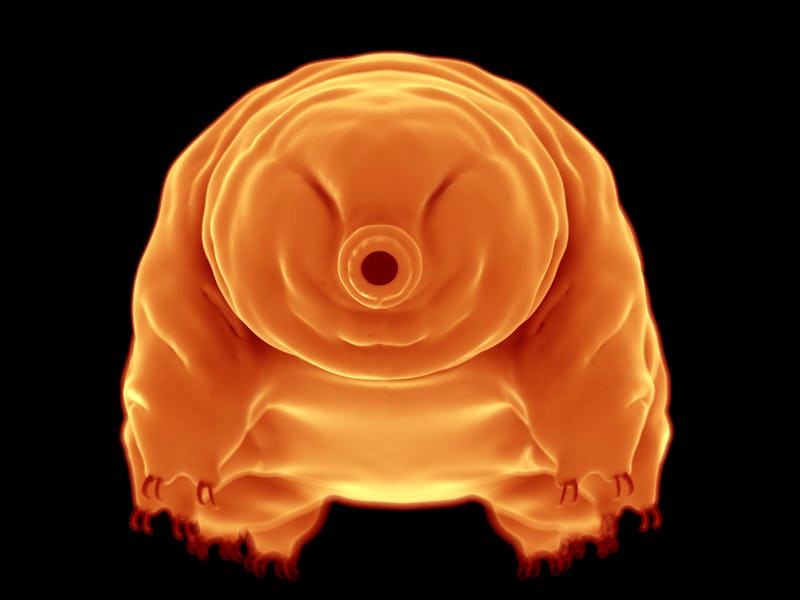Climate change is killing one of nature's most famous survivalists
Tardigrades can survive outer space, but they are no match for global warming.

Tardigrades are a lesson in survival skills. These tiny creatures can withstand extreme conditions — from space radiation to being frozen for decades.
Their hardiness inspires hope for post-apocalyptic life and the future of space travel. But new research suggests all is not well for the microscopic invertebrates here on Earth. Space radiation and freezing might not kill them, but our warming planet might be too hot to handle.
In a new study, researchers found that Ramazzottius varieornatus, a species of tardigrade found in transient freshwater habitats, are highly vulnerable to high temperatures over the long term. The water bears are so sensitive, in fact, that the negative effects of warming can be seen with just a slight temperature increase.
The results were published this week in the journal Scientific Reports.
Tardigrades are vulnerable to high temperatures over the long term, new research shows.
For the study, researchers gathered tardigrade specimens from gutters on the roof of a house in Nivå, Denmark. They then exposed both active and desiccated (dehydrated) tardigrades to high temperatures for 24 hours. They did the same with tardigrades that had been allowed to become accustomed to higher temperatures, too.
Among non-acclimated active tardigrades, a temperature of 37.1 degrees Celsius tended to prove lethal. For acclimated tardigrades, the fatal temperature was slightly higher, at 37.6 degrees Celsius. Denmark’s current maximum temperature is just 36.4 degrees Celsius — that’s not much of a difference to the lethal temperature, suggesting tardigrades may be especially vulnerable to a warming Earth.
Surprisingly, the desiccated specimens were more resilient than their active study mates. Among the dried-out tardigrades, exposure to the burning heat of 82.7 degrees Celsius for an hour led to a 50 percent mortality rate. But over the course of 24 hours, a lower temperature — 63.1 degrees Celsius — was enough to trigger the same number of deaths, the study finds.
There’s evidence that some tardigrade species can tolerate temperatures as high as 151 degrees Celsius, according to the study. But those exposures lasted just 30 minutes — perhaps not long enough for the deadly effects of heat to take hold.
The study spotlights a harsh truth: When it comes to surviving and thriving in a changing climate, every creature — no matter how hardy — has its limits. Hopefully studies like this can encourage us not to test those boundaries.
Abstract:
Global warming is already having harmful effects on habitats worldwide and it is therefore important to gain an understanding of how rising temperatures may affect extant animals. Here, we investigate the tolerance to high temperatures of Ramazzottius varieornatus, a tardigrade frequently found in transient freshwater habitats. Using logistic modelling on activity we evaluate the effect of 24 hour temperature exposures on active tardigrades, with or without a short acclimation period, compared to exposures of desiccated tardigrades. We estimate that the 50% mortality temperature for non-acclimated active tardigrades is 37.1 °C, with a small but significant increase to 37.6 °C following acclimation. Desiccated specimens tolerate much higher temperatures, with an estimated 50% mortality temperature of 82.7 °C following 1 hour exposures, but with a significant decrease to 63.1 °C following 24 hour exposures. Our results show that metabolically active tardigrades are vulnerable to high temperatures, yet acclimatization could provide a tolerance increase. Desiccated specimens show a much higher resilience—exposure-time is, however, a limiting factor giving tardigrades a restricted window of high temperature tolerance. Tardigrades are renowned for their ability to tolerate extreme conditions, but their endurance towards high temperatures clearly has an upper limit—high temperatures thus seem to be their Achilles heel.